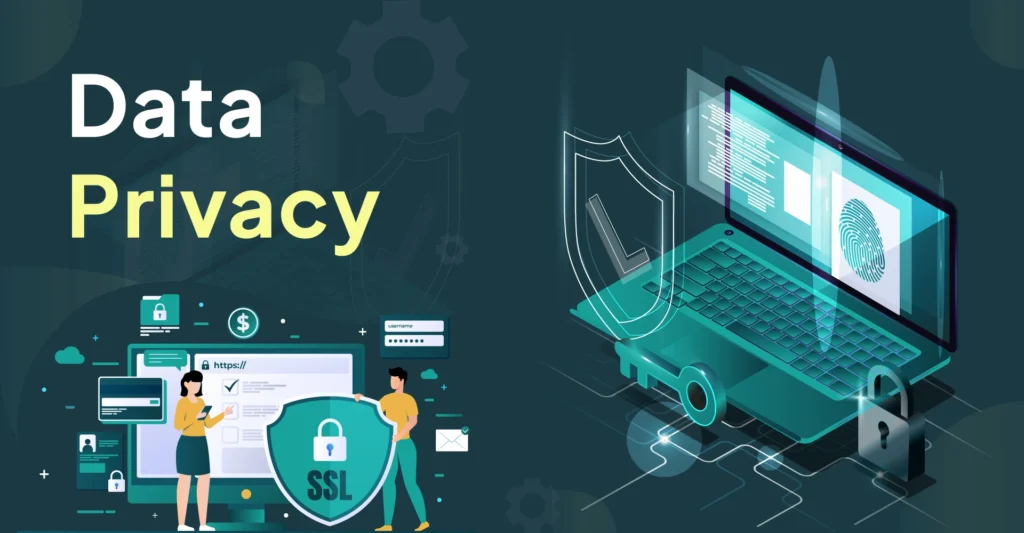The advancement in tech development and the need for data privacy year in and year out have made data more than just a business asset; it’s the foundation of a modern relationship between brands and consumers.
As businesses gather customer information—from emails and payment details to biometric scans and behavioral insights—they are not only fueling innovation and growth but also entering an unspoken agreement: “Protect my data, and I will trust your brand.”
This exchange, while often unspoken, has become central to consumer-brand loyalty.
Data privacy is now a critical factor influencing purchasing behavior, brand advocacy, and even public perception.
This article explores why data privacy has become the cornerstone of customer trust in 2025, the risks and opportunities it presents, and what businesses must do to thrive in this privacy-conscious era.
The Evolution of Privacy: From Optional to Essential
The Pre-Privacy Era
In the early 2000s, users clicked “I agree” without reading the terms, allowing companies unchecked access to personal data. Most people were unaware of how their data was being used, traded, or stored.

The Tipping Point
Scandals like Cambridge Analytica, major breaches like Equifax, and whistleblower revelations shifted public awareness
Governments responded with regulations like GDPR (Europe), CCPA (California), and NDPR (Nigeria).
READ ALSO: Why Cybersecurity Is No Longer a Luxury for Businesses: It’s a Lifeline in 2025
The Present Reality: 2025
Consumers today are informed and empowered. They know their rights and demand transparency. Privacy is no longer a luxury—it is a baseline expectation.
Why Data Privacy Matters More Than Ever
1. Trust Is Currency
Modern consumers treat trust as the primary currency in their brand interactions. According to a 2025 McKinsey survey, 81% of consumers say they must trust a brand before buying from it.
- Data breaches destroy loyalty. A single misstep can lead to mass unsubscriptions, bad press, and long-term brand damage.
- Transparency builds reputation. Brands that show clear intentions and protective practices are more likely to be recommended.
2. Legal Risks and Regulatory Compliance
Regulatory bodies are enforcing strict compliance with data laws. Non-compliance brings consequences:
- Heavy Fines: GDPR fines can range from €20 million to 4% of a company’s global revenue.
- Litigation: Users and governments can sue for data misuse.
- Operational Disruptions: Forced shutdowns, audits, and loss of business licenses.
3. Cybersecurity Threats and Customer Fear
Increased cyber threats—from ransomware to AI-powered phishing—have made consumers anxious.
- Security lapses equal betrayal. Customers equate data breaches with dishonesty.
- Proactive defense earns trust. Businesses that prioritize security stand out in volatile environments.
Customer Expectations in 2025
Today’s customer demands a say in their digital footprint. Their expectations include:
Transparency: They want clear explanations of what data is collected and why.
Control: The ability to opt in or out, modify data sharing preferences, or delete their information.
Consent: No more hidden checkboxes. Explicit, informed consent is expected.
Security: Customers want assurance that their data is not vulnerable to hacking or misuse by third parties.
Failing to meet any of these four expectations results in lost trust and customer churn.
How Businesses Can Build and Maintain Trust
1. Privacy by Design
Embed privacy protocols in every stage of product and service development. Make it part of the business DNA.
- Example: Using encryption from the start, not as an add-on.
2. Simplified Privacy Policies
Most customers never read complex terms. Clear, concise privacy notices build trust.
- Use visual aids, FAQs, and language that a 13-year-old can understand.
3. Data Minimization
Only collect what is necessary. Unnecessary data collection raises suspicion.
- Audit data regularly and purge outdated or unused information.
4. Real-Time Breach Notification
Don’t hide incidents. Immediate transparency, along with a corrective action plan, can build respect.
- Think, “We messed up; here’s what happened, and here’s how we’re fixing it.”
Educate users about privacy, how their data is utilized, and how they can safeguard themselves.
5. Customer Education
- Educational emails, infographics, webinars—make it accessible.
6. Empower Through Consent Management Platforms (CMPs)
Give users a dashboard to manage their data preferences in real time.
- Leading firms now include a “My Privacy Center” in their apps and websites.
Real-World Examples
Apple: Confidentiality as a Brand Pillar
Apple has made data confidentiality a unique selling point. From on-device processing to “App Tracking Transparency” alerts, the company constantly reassures users that “What happens on your iPhone stays on your iPhone.”
Facebook (Meta): The Cost of Breached Trust
Years of scandals have severely damaged Meta’s reputation. Despite rebranding efforts, consumer skepticism remains high due to past data-sharing controversies and opaque practices that compromised user data protection.
Startups Winning on Data Security
Security-first platforms like Signal and ProtonMail have seen rapid adoption, proving that transparency and robust data protection are powerful market differentiators
Industry-Specific Perspectives
Retail and E-commerce
- Personalized recommendations must balance utility with user consent.
- Secure payment and checkout processes are non-negotiable.
Financial Services
- Requires stringent compliance with data laws like PSD2 and GLBA.
- Biometric and two-factor authentication are now baseline features.
Tech and SaaS
- Cloud services must implement strict access controls.
- API data usage transparency is increasingly monitored.
Healthcare
- HIPAA and patient data protection are critical.
- AI diagnosis tools must be clear about how they store and use data.
The Business Case for Privacy
Brand Loyalty and Advocacy: Customers who feel respected stay longer, refer more, and spend more.
Competitive Advantage: Privacy-first companies attract privacy-conscious users, a growing demographic.
Lower Legal and Operational Risks: Proactive compliance prevents regulatory hurdles and costly breaches.
Ethical and Social Capital: Being ethical boosts stakeholder confidence, employee pride, and public goodwill.
Future Outlook: What’s Next?
1. AI and Privacy
As AI becomes more embedded in daily business, expect increasing scrutiny over algorithmic data use. AI systems must be designed with fairness, explainability, and privacy in mind.
2. Zero-Party Data
Businesses will shift toward data that is intentionally shared by users (surveys, preferences, feedback) rather than inferred or tracked.
3. Decentralized Identity Systems
Blockchain-based identity systems may allow customers to control and verify their data independently of large platforms.
4. Global Harmonization of Privacy Laws
We’ll likely see a move toward global privacy standards that transcend national boundaries.
Also Read: Choosing the Right Business Location: 15 Key Factors That Can Make or Break Your Success
Privacy is Power
In 2025, protecting customer data isn’t just a compliance checkbox—it’s a strategic business imperative.
Trust is earned through honesty, security, and empowerment. As businesses compete in a hyper-digital world, the true differentiator will be how well you guard your customers’ data.
Companies that embrace this ethos won’t just survive—they’ll lead.
Because in today’s world, privacy isn’t a feature. It’s a promise.



2 Comments
Pingback: Why Cybersecurity Is No Longer a Luxury for Businesses: It’s a Lifeline in 2025 - Magic Media
Pingback: 7 Hidden Insights Your User Reviews Reveal About Your Product That You Might Be Missing - Magic Media